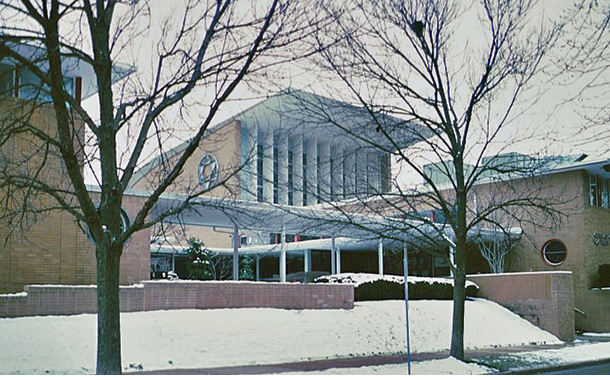TAMU grant funds investigation of postwar synagogue design

Anat Geva
The departure of U.S. synagogue designs from historicism to Modernism in the 1950s and their expressions of American values will be investigated by Anat Geva, associate professor of architecture at Texas A&M, with the help of a $10,000 grant from the [Program to Enhance Scholarly and Creative Activities] (http://vpr.tamu.edu/researchdevelopment/funding/internal/scholarlycreative) , administered by Texas A&M’s Division of Research.
“After World War II there was a reconceptualization of the design and construction of houses of worship in the U.S.,” said Geva. “These changes reflected perceptions of religious freedom as well as the influences of modern architectural trends and innovations in building technology.”
Postwar synagogue designs are examples of how prominent architects embraced these changes to express American values of freedom of religion, tolerance and democracy, she said.
Among the first synagogues to reflect these changes was the [B’Nai Amoona] (http://www.builtstlouis.net/mod/mod17.html) , designed by [Eric Mendelsohn] (http://www.architectureweek.com/2001/0124/culture_1-1.html) , an influential Modernist architect who emigrated to England from Germany in 1933 amid growing anti-Semitism, then moved to the U.S. in 1941.
The design of the St. Louis synagogue, built in 1950, was a sweeping architectural statement, wrote Ivy Schroeder in a Riverfront Times [article] (http://www.riverfronttimes.com/2000-10-11/culture/architect-of-form-and-spirit-eric-mendelsohn/) .
“It leaves traditional synagogue forms behind and dispenses with standard architectural ornament in favor of startlingly spare, Modern lines,” she said. “Mendelsohn's radical design infuses the synagogue form with a new spirit; it acknowledges the past while forging insistently forward.”
Influenced by Mendelsohn, said Geva, other prominent architects, including Frank Lloyd Wright, Philip Johnson, Walter Gropius, Louis Kahn, Marcel Breuer and Minoru Yamasaki ventured to bridge modernism and Judaism in their design of the American synagogue, while linking their designs to the American landscape and values.
“These attempts continued during the 1960s, where modernist architects expressed spirituality, community, traditional values, and transformation in their design of the modern synagogue,” she said.
Geva said her study will add a new dimension to former studies that centered on the socioeconomic status and cultural traditions of Jewish congregations.
Previous post
Tags
Related Posts

Arch prof helping restore original hues of Bermuda houses

Lang helped curate exhibit ranked as a top event of 2011

CHC documenting Alamo's evolution
Solar light pipe testing to begin
Prof contributes to ancient Crete book
Follow Us
Facebook Twitter Vimeo Youtube Flickr RSS
Recent Posts

Planning prof heads study of disaster housing aid

A message from the dean

Former student remembered as expert planner

Leading educator named new head of Architecture Dept.

 Anat Geva is researching how St. Louis’ B’Nai Amoona, designed by Eric Mendelsohn, and other postwar synagogue designs moved from historicism to Modernism and expressed American values.
Anat Geva is researching how St. Louis’ B’Nai Amoona, designed by Eric Mendelsohn, and other postwar synagogue designs moved from historicism to Modernism and expressed American values.



_thumbnail_small.png)
